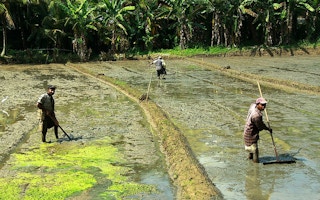Food shortages brought on by extreme weather events have resulted in almost a quarter of Sri Lanka’s 21 million people becoming malnourished, says a World Food Programme (WFP) document.
“The increased frequency of natural disasters such as drought and flash floods further compounds food and nutrition insecurity,” says the document, the latest WFP country brief for Sri Lanka, released in June.
As per WFP’s most recent Cost of Diet Analysis, almost 6.8 million (33 per cent) Sri Lankans cannot afford the minimum cost of a nutritious diet and a large portion of this vulnerable population lives in poverty and is frequently subjected to extreme weather events.
“
These people have very limited coping mechanisms, and these kinds of disasters can drive them deeper into poverty.
Anura Priyadarshana Yapa, minister for disaster management, Sri Lanka
In May heavy rains, brought on by Cyclone Roanu, affected 340,000 persons in 22 of the island’s 25 districts.
“These people have very limited coping mechanisms, and these kinds of disasters can drive them deeper into poverty,” says minister for disaster management Anura Priyadarshana Yapa.
After the landslides and rains the government decided to shift out those living in high-risk areas but, according to public officials, they were faced with the problems of locating safe land and making income from agriculture.
“Most of those living on these high-risk areas rely on agriculture and we need to see how to secure their livelihoods,” head of the disaster management centre, Kegalle district, tells SciDev.Net.
The UN estimates that every year around 700,000 Sri Lankans are impacted by extreme weather, some repeatedly. “A sizeable segment of the flood affected population are squatters living in vulnerable areas prone to frequent flooding,” the UN Office for the Coordination of Humanitarian Affairs said following estimates made soon after the May floods and landslides.
“We need to develop long-term solutions, not stop-gap answers,” says Yapa, agreeing that there were serious problems arising from erratic weather patterns in Sri Lanka in recent years.
This piece was produced by SciDev.Net’s South Asia desk and was republished with permission.










